Where to eat and drink in the 6th arrondissement of Paris
Paris is the main host city of the 2024 Summer Olympics, from 24 July to 11 August 2024 in France. With an estimated two million residents, the City of Paris is divided into twenty administrative districts, referred to as arrondissements. Located on the southern bank of the river Seine (the Rive Gauche), the 6th arrondissement has a population of 40,000 and is often referred to as le sixième.
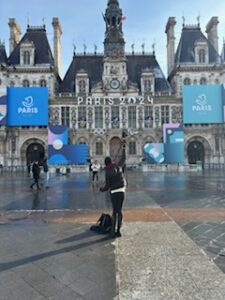
Home to the atmospheric Saint-Germain-des-Prés Quartier and the Quartier Latin (partially), the 6th arrondissement is considered by Parisians and visitors alike to be the quintessential Paris neighbourhood. Also called Luxembourg, the 6th arrondissement is home to the exquisite Luxembourg Palace with its extensive royal gardens, as well as renowned educational institutions (such as the École nationale supérieure des Beaux-Arts, the École des hautes études en sciences sociales and the Institut de France), Parisian monuments (such as the Odéon-Théâtre de l’Europe and the Pont des Arts), and historic churches (such as the churches of Saint-Germain-des-Prés and Saint-Sulpice).
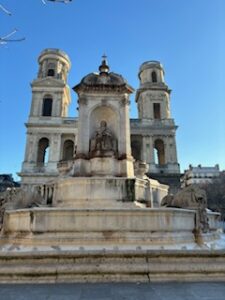
The 6th arrondissement is particularly known for its many associations with French and foreign intellectuals, philosophers, artists and writers, as well as its café culture. When I last visited the French capital earlier this year, I stayed close to the Jardin des Grands-Explorateurs and spent most of the time walking and cafe-crawling around the 6th arrondissement. In fact, this was not the first time I stayed in the 6th arrondissement, having previously stayed in other hotels in the 6th arrondissement and a friend’s tiny flat in the Quartier Latin. Today, I’m sharing my recommendations for where to eat and drink in the 6th arrondissement.
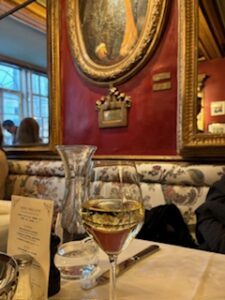
Café des Beaux Arts
Overlooking the Seine, the Café des Beaux Arts is close to the Institut de France (the headquarters of five académies, including the Académie Française). It is also close to the Pont des Arts, a bridge linking the 6th arrondissement with the 1st, on the other side of the Seine.
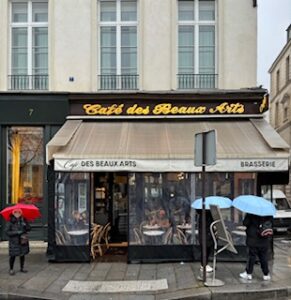
Ladurée
Not far from the Café des Beaux Arts, there’s Ladurée, on Rue Bonaparte. Established in 1862, Ladurée is well-known throughout the world for its macarons. The first shop was on Rue Royale in Paris. Nowadays, there are many shops in the French capital, as well as in other cities in France and abroad. The patisserie on Rue Bonaparte (in the 6th arrondissement) was opened in 1997. On the first floor, there’s a cosy cafe, well worth a visit.
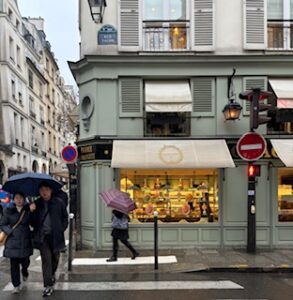
Les Deux Magots
Located next to the Church of Saint-Germain-des-Prés, Les Deux Magots is the quintessential Parisian cafe (but they also serve food). It has been the favourite hangout of famous artists and writers such as Guillaume Apollinaire, Louis Aragon, André Gide, Jean Giraudoux, Fernand Léger, Jacques Prévert and Ernest Hemingway, hence its nickname ‘café littéraire’. Les Deux Magots has also been associated with Jean-Paul Sartre, Simone de Beauvoir and Albert Camus.
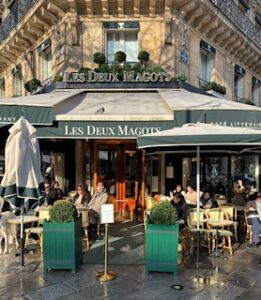
Café de Flore
Right next to the Deux Magots, there is the Café de Flore. It opened in 1887 and owes its name to a small sculpture of a deity on the other side of the Boulevard Saint-German. Like the Deux Magots, Café de Flore was also popular with artists and writers and has been associated with the birth of surrealism.
Marché Saint-Germain
Walking past Saint-Germain-des-Prés, we continue to another church, the 17th-century Église Saint-Sulpice. Made famous by Dan Brown in The Da Vinci Code, this is the 3rd largest church in Paris. Not far from it, there’s Marché Saint-Germain. Framed by Rue de Seine to the east, Lobineau to the south, Mabillon to the west and Clément to the north, Marché Saint-Germain is home to an Apple Store and Uniclo, but also to a food hall and a restaurant, Le Comptoir du Marché.
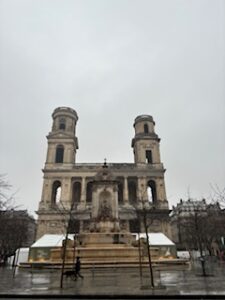
Secco
Secco is a small boulangerie pâtisserie chain. In the 6th arrondissement, you’ll find it on Rue Mabillon, opposite to Marché Saint-Germain.
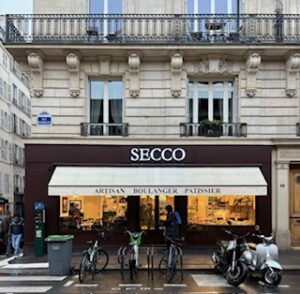
Le Procope
From Secco, we continue to a renowned restaurant, Le Procope. Located in the Rue de l’Ancienne Comédie, Le Procope was opened in 1686 by the Sicilian chef Francesco Procopio dei Coltelli. It is said that Le Procope was frequented by the French philosophers Voltaire and Diderot, hence its nickname ‘le cafe des revolutionnaires’.
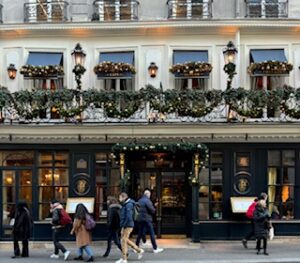
Malongo
Not far from the Procope, there’s a boutique cafe, Malongo. Malongo was actually established in Nice in 1934, as a small coffee roastery. Located on Rue Saint André des Arts in the 6th arrondissement of Paris, Malongo is just a stone’s throw from Notre Dame, the medieval Catholic cathedral on the Île de la Cité in the 4th arrondissement. Also close to Malongo, there is Shakespeare and Company, an English-language bookshop, overlooking the Seine.
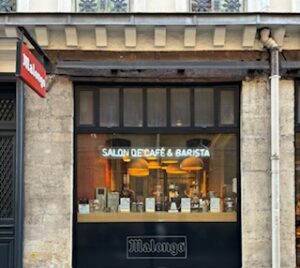
Coffee Club
Last but not least, located on Rue d’Assas, Coffee Club is a cafe-restaurant close to the Jardin des Grands-Explorateurs and the Jardin du Luxembourg. In the north of the latter, there’s the Luxembourg Palace (Palais du Luxembourg), home to the Senate. Immediately west of the Palace on Rue de Vaugirard is the Petit Luxembourg (the residence of the President of the Senate), and slightly further west, the Musée du Luxembourg, located in the former orangery (Orangerie du Sénat).
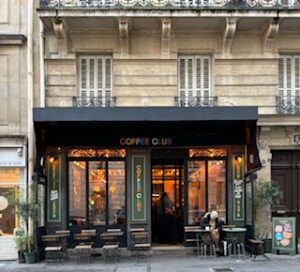
To mark the 2024 Olympic Games, the Musée du Luxembourg is currently organizing an exhibition on the future of design and sport (taking place until 11 August). To mark the 50th anniversary of Pablo Picasso’s death, the Musée du Luxembourg recently organized an exhibition on the story of an extraordinary friendship between the Spanish painter and the American novelist and poet Gertrude Stein. I was fortunate to visit the exhibition back in January, when I last visited the City of Light.
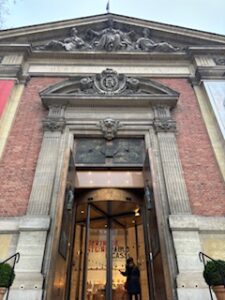
Further reading
There’s more to France than Paris. Check out my post ‘7 sweet spots in Bordeaux & Saint Émilion‘.
Alex
(the Traveling Psychiatrist)